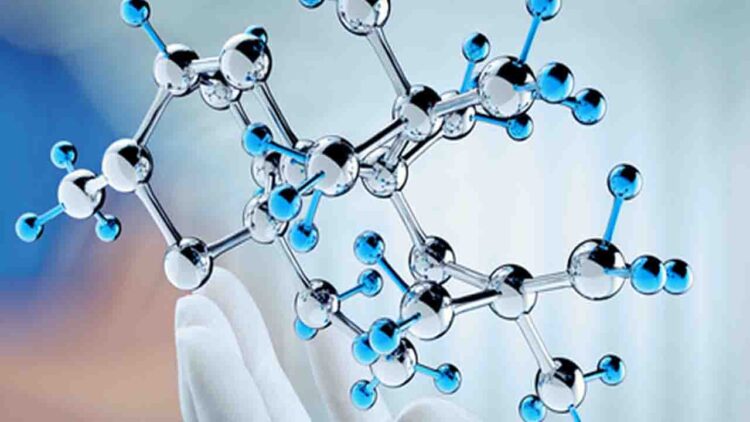Mitochondria, often regarded as the powerhouse of the research model, play a pivotal role in cellular energetics, oxidative stress regulation, and apoptosis. Given their central function, mitochondrial dysfunction has been implicated in various pathological conditions, prompting researchers to explore novel compounds that may modulate mitochondrial activity.
Among these, SS-31 peptide has emerged as a promising molecule with potential implications across multiple scientific domains. Investigations suggest that SS-31 may interact with mitochondrial membranes, potentially stabilizing their structure and influencing bioenergetic processes. This article explores the hypothesized properties of SS-31, its biochemical interactions, and the speculative implications in various research fields.
Structural and Biochemical Properties
SS-31 is a synthetic tetrapeptide composed of four amino acids, sequence-configured to selectively interact with cardiolipin, a phospholipid uniquely localized to the inner mitochondrial membrane. The peptide is amphipathic, which might enable it to integrate into mitochondrial membranes with high specificity. Its positive charge is theorized to facilitate its accumulation within the negatively charged mitochondrial matrix, a property that may make it a unique tool for exploring mitochondrial bioenergetics.
Research suggests that SS-31 may modulate interactions between cardiolipin and respiratory chain complexes, thereby preserving their integrity under oxidative stress conditions. The structural properties of SS-31 suggest its potential to act as a scaffold within the lipid bilayer, potentially influencing mitochondrial morphology and function. These characteristics have led to growing interest in its implications across various scientific disciplines.
Mitochondrial Bioenergetics and Oxidative Stress
The potential of SS-31 to accumulate in mitochondria and interact with cardiolipin has led researchers to theorize its utility in studying mitochondrial bioenergetics. Mitochondria generate the majority of adenosine triphosphate (ATP) through oxidative phosphorylation, an essential process for cellular function. Dysregulation in mitochondrial activity is a hallmark of various physiological and pathological states, and SS-31 might serve as a tool for dissecting the molecular underpinnings of these processes.
Investigations purport that SS-31 might support mitochondrial respiration by optimizing electron transport chain (ETC) activity. This property may enable researchers to model conditions of mitochondrial dysfunction, exploring how alterations in ETC components contribute to cellular outcomes. Additionally, SS-31 has been hypothesized to mitigate oxidative stress by potentially reducing the production of mitochondrial reactive oxygen species (ROS). Given that oxidative stress is implicated in numerous cellular dysfunctions, SS-31 might provide insights into mechanisms underlying oxidative damage and its broader implications.
Neurodegenerative Research Implications
Neurodegenerative disorders are often associated with mitochondrial dysfunction and oxidative stress. Research indicates that SS-31 might exhibit properties relevant to studying neurodegenerative conditions. The peptide may stabilize mitochondrial membranes, potentially preserving neuronal integrity under stress conditions. Furthermore, SS-31 has been theorized to modulate inflammatory pathways, which might be significant in understanding neuroinflammation-related disorders.
Studies suggest that SS-31 may impact mitochondrial cristae morphology, which might be relevant in exploring the mechanisms of neurodegenerative diseases. Research suggests that, due to the complexity of neurodegenerative conditions, SS-31 may serve as a valuable research tool in investigating mitochondrial contributions to neuronal integrity and degeneration.
Cardiovascular and Metabolic Research
Mitochondrial function is integral to cardiovascular integrity, and SS-31 has been hypothesized to play a role in modulating mitochondrial activity within cardiac tissues. Investigations purport that SS-31 might impact mitochondrial respiration in cardiomyocytes, potentially providing insights into cellular energetics in cardiac physiology. Additionally, SS-31 has been theorized to interact with mitochondrial membranes in metabolic tissues, which may be relevant to the study of metabolic disorders.
Given the peptide’s potential impact on mitochondrial bioenergetics, researchers have explored its role in conditions characterized by mitochondrial dysfunction. Research suggests that SS-31 may provide a framework for investigating mitochondrial adaptations in response to metabolic challenges, which may offer a promising avenue for further exploration.
Mitochondrial Integrity and Cellular Longevity Research
Cellular longevity is closely linked to mitochondrial integrity, and SS-31 has been hypothesized to contribute to mitochondrial stability. Research suggests that SS-31 may preserve mitochondrial membrane integrity, potentially impacting cellular aging processes. Investigations suggest that SS-31 may mitigate mitochondrial fragmentation, which is relevant to understanding age-related cellular decline.
Additionally, SS-31 has been theorized to modulate mitochondrial dynamics, potentially influencing processes such as mitophagy and mitochondrial biogenesis. These properties suggest that SS-31 might be a valuable research tool for exploring mitochondrial contributions to cellular longevity and adaptation.
Conclusion
SS-31 peptide has garnered significant interest in scientific research due to its hypothesized interactions with mitochondrial membranes and potential implications across various domains. Investigations suggest that while ongoing studies continue to explore its biochemical properties, SS-31 may provide valuable insights into mitochondrial bioenergetics, oxidative stress regulation, neurodegenerative mechanisms, cardiovascular physiology, and cellular longevity.
It has been hypothesized that SS-31 might emerge as a key molecule in understanding mitochondrial contributions to cellular function and adaptation as research advances. Visit www.corepeptides.com for the best research peptides available online and the most informative peptide articles. Remember that this paper serves educational objectives only and should be treated as such. None of the compounds mentioned in this paper has been approved for human or animal consumption.
References
[i] Birk, A. V., Liu, S., Soong, Y., Mills, W., Singh, P., Warren, J. D., & Szeto, H. H. (2014). The mitochondrial-targeted compound SS-31 re-energizes ischemic mitochondria by interacting with cardiolipin. Journal of the American Society of Nephrology, 25(11), 2290–2300.
[ii] Wu, J., Zhang, M., Liu, D., & Huang, Y. (2018). SS-31 provides neuroprotection by reversing mitochondrial dysfunction and improving synaptic function in a mouse model of Alzheimer’s disease. Frontiers in Aging Neuroscience, 10, 229.
[iii] Chiao, Y. A., Kolwicz, S. C., Basisty, N., Gagnidze, A., Zhang, J., Gu, H., … & Rabinovitch, P. S. (2020). Late-life restoration of mitochondrial function reverses cardiac dysfunction in old mice. eLife, 9, e55513. https://doi.org/10.7554/eLife.55513Википедия — свободная энциклопедия+2
[iv] Zhao, K., Zhao, G. M., Wu, D., Soong, Y., Birk, A. V., Schiller, P. W., & Szeto, H. H. (2004). Cell-permeable peptide antioxidants targeted to inner mitochondrial membrane inhibit mitochondrial swelling, oxidative cell death, and reperfusion injury. The Journal of Biological Chemistry, 279(33), 34682–34690. https://doi.org/10.1074/jbc.M402999200
[v] Campbell, M. D., Duan, J., Samuelson, A. T., Gaffrey, M. J., Merrihew, G. E., Egertson, J. D., … & Marcinek, D. J. (2019). Improving mitochondrial function with SS-31 reverses age-related redox stress and improves exercise tolerance in aged mice. Free Radical Biology and Medicine, 134, 268–281. https://doi.org/10.1016/j.freeradbiomed.2019.01.008












